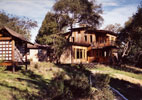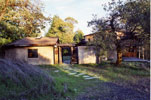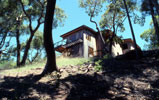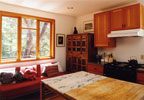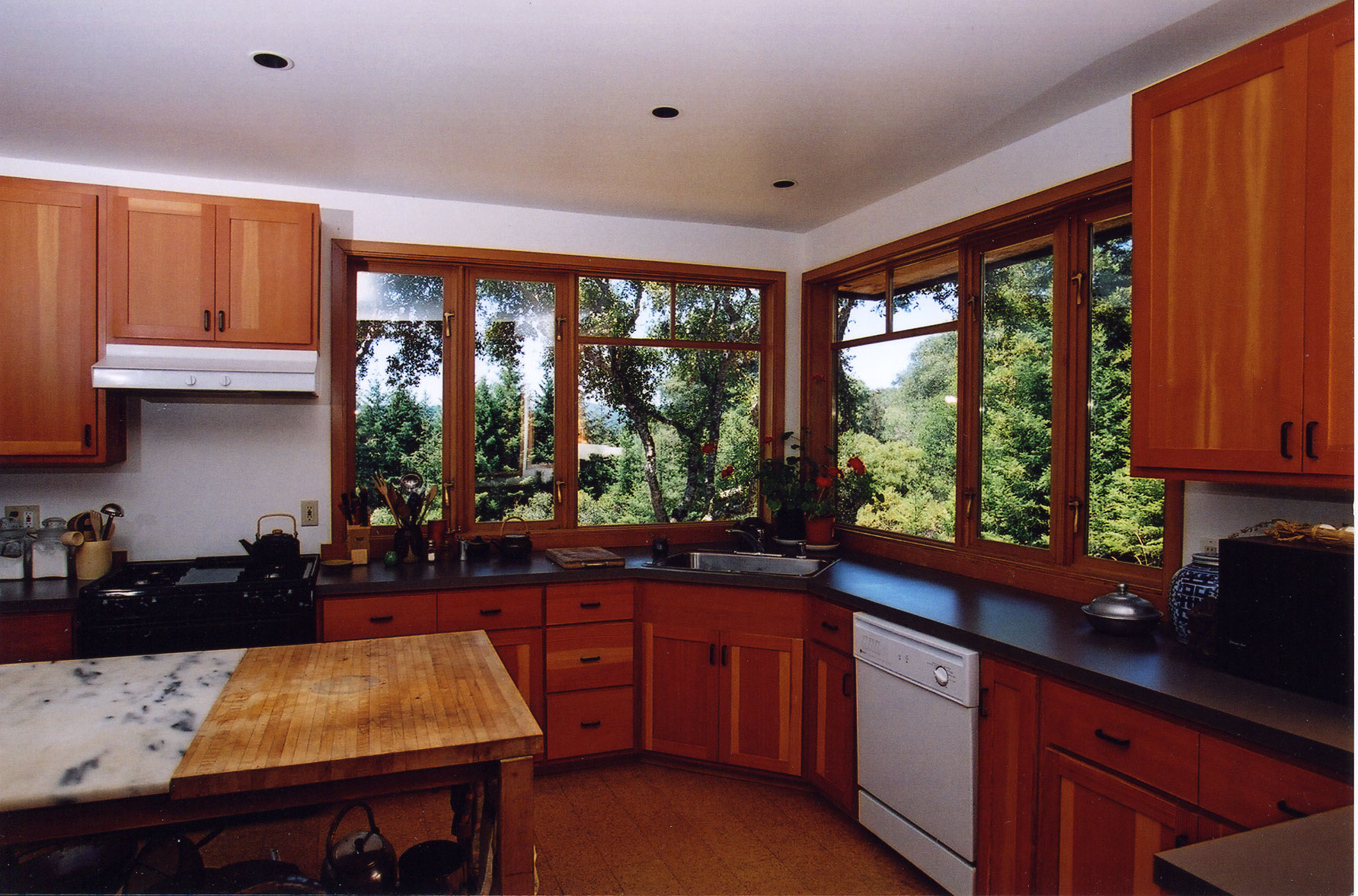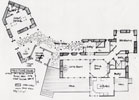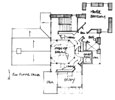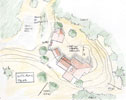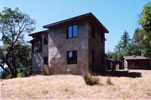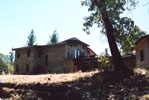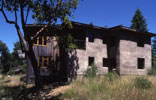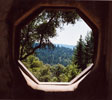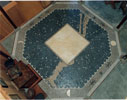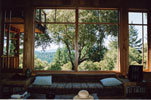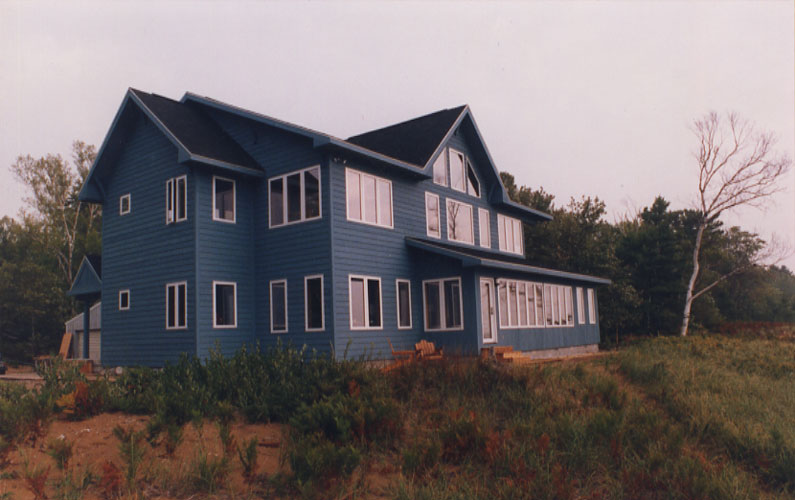New Residential Projects
New home projects present the architect with a clean slate, a chance to design in a way that fits with the site and speaks to the desires of the client. A new house can be more daunting to the client than a remodel because the choices can seem endless, and two ideas that seem great separately can conflict when put together. Defining what the house should be is especially important. We work with clients to develop and shape their ideas and dreams into a clear and buildable form. Wrapping your mind around spaces that exist only on paper can be a challenge. We utilize 3D computer drafting that allows you to see your new home set in the site before the first nail is struck.
Presented here are two of our favorites.New Residential: Dacha
This two thousand square foot country house, a dacha designed for a 60-something writer, was built on a twenty acre site which includes a grassy, oak studded, ridgetop shoulder that looks southward across two more redwood forested hillsides and ridges. In Mendocino’s Anderson Valley it is 18 miles from the coast, almost five miles up a winding dirt road, and 1 1/2 miles from the closest power pole.
The client’s program requirements included: 1) gathering space for weekend retreats with groups of writers; 2) spaces for many people to sleep in relative privacy; 3) a central gathering area; 4) spaces neither too large nor out-of-scale for her to live alone or with her small family; 5) complete living on one accessible level should that become necessary; 6) renewable and/or efficient energy sources.
The resulting construction, a two story, solar-powered, rice strawbale house, has both active and passive solar elements integrated into the design without dominating the architecture. A 380 sq. ft. guest house and 140 sq. ft. power shed are tied to the main house by a trellis, straw bale wall, and stone path.
The house runs on 115 volts and is wired like a standard home except for the solar panels, inverter, batteries, and generator back-up. The dacha’s large windows in the south facing wall admits direct winter sun to the concrete floor for passive solar gain; the two foot thick strawbale in-fill walls on the north, east, and west, stuccoed on the outside and gypsum plastered within, provide thermal mass which holds heat in the winter and cold in summer when the high sun does not reach the floor.
With views to the south, east, and north, the house is designed around an octagonal dining room open to the kitchen, living room, and entry. A rough-sawn cedar octagonal dome with a four by four skylight rises directly over the dining rooms′ mosaic floor which represents the night sky. An open mezzanine library circles the octagon.
The two main bedrooms, one on each floor, are diagonal to the axis of the house; their windows provide four directional views.
A secret room behind the redwood bookcase has an operational skylight, a built in desk and two bunks, the study a slide-out bed, the space above the stairs behind a Chinese window a sleeping platform, and three downstairs couches together provide, in addition to the bedrooms, sleeping space for a least eight.
Recycled materials include old sinks, faucets and marble countertops, remilled vertical Douglas fir window trim from a 1970′s era Sea Ranch deck, and shower platforms from Golden Gate Park Monterey cypress blown down in a windstorm. The upstairs cherry floors are from a sustainable source.
The kitchen countertops are plain formica, the central table a cherished family-made item, around which a number of kitchens have been designed. The kitchen couch seats those who inevitably congregate wherever cooking is taking place.
